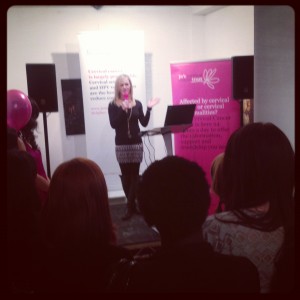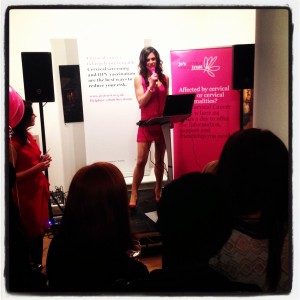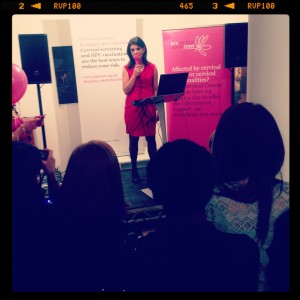 Pregnancy is a life changing, joyous, emotional and exciting journey for most women. However, approximately two-thirds of women experience back pain and almost one-fifth experience pelvic pain during pregnancy. This pain often increases with advancing pregnancy, interfering with daily activities, work and sleep. Fortunately this condition is treatable, it is important to seek treatment sooner rather than later. Prompt diagnosis and treatment is key to successful resolution of symptoms.
Pregnancy is a life changing, joyous, emotional and exciting journey for most women. However, approximately two-thirds of women experience back pain and almost one-fifth experience pelvic pain during pregnancy. This pain often increases with advancing pregnancy, interfering with daily activities, work and sleep. Fortunately this condition is treatable, it is important to seek treatment sooner rather than later. Prompt diagnosis and treatment is key to successful resolution of symptoms.
The hormones released during pregnancy to prepare a women’s body to grow a baby and give birth, soften and relax the soft tissues of the body (eg. muscles, ligaments). This increased softening increases your joints’ range which means that they do not receive the same protection from the ligaments as before. It is this, coupled with the weight of your growing uterus that may cause backache or sciatica.
Symptoms of back pain and PGP
Back pain can be felt in the upper, middle or lower back. It is probably most commonly felt in the low back during pregnancy and can vary from an occasional ache to a constant sharp or nagging pain in any of these areas.
Pain in the pelvis is described as pelvic girdle pain (PGP), used to be known as symphysis pubis dysfunction (SPD), but this implied that only the pubic bone was involved, which is often not the case.
A range of symptoms can be described as PGP and they vary in intensity from woman to woman and even pregnancy to pregnancy.
The main symptom is pain;
- pain over the pubic bone at the front in the centre
- pain across one or both sides of your lower back
- difficulty and/or pain walking, waddling gait
- clicking or grinding in the pelvis with movement
- pain when weight bearingWomen may experience pain anywhere in the pelvis or into the front of the thighs. These symptoms tend to increase and intensify with walking, standing, sitting, moving the legs apart, standing on one leg (think getting dressed into socks, underwear), climbing stairs and turning over in bed. Symptoms vary from mild to more severe needing support with crutches or a wheelchair.What causes back pain or PGP? For most women PGP is a mechanical problem; there is often asymmetry in the pelvis, with one joint becoming stiffer or more mobile than the others. It is more common in women with a previous history of PGP/low back pain. In approximately 9% of women with PGP the cause is purely hormonal and this tends not to respond to treatment.
When might back pain or PGP start?
it can start at any stage of the pregnancy, it may come on gradually or start quite suddenly. Sometimes symptoms will disappear or improve with rest.
How do I know if I have PGP?
Diagnosis of this painful condition is based on the location of the pain and by taking a careful history of your symptoms.
Will back pain or PGP affect my baby?
No, it will not affect your baby. However, it is important, however that the midwives caring for you are aware that you have back or pelvic girdle pain.
What can I do about PGP?
It is important to remember that whilst PGP is common, it is not normal, but is treatable;l Often resolving within a few treatments. Firstly, tell your midwife, or whoever is responsible for your antenatal care, and then seek treatment sooner rather than later. Prompt diagnosis and treatment is key to successful resolution of symptoms.
Meanwhile plan your day carefully, avoiding too many trips upstairs, remain active with the limits of your pain, avoiding activities that increase your discomfort. Rest is important, rest more frequently, try sitting for activities that normally require standing ie ironing. Try sleeping with a pillow between the legs, or use the pregnancy cushion known as ‘dream genie’.
What can I do about back pain?
Seek treatment sooner rather than later. Try to find a McTimoney Chiropractor who is experienced in treating women during pregnancy and ask them for a few safe exercises you can perform at home. Wearing support tights or a belly band can often give enough support and relief without having to resort to an actual back or belly belt. Try sleeping with a pillow between the legs or under the legs in early pregnancy when you may still be sleeping on your back.
A multi faceted approach is need to treating both conditions. After taking your medical history and examining your back and pelvis, treatment takes the form of gentle mobilization of the pelvis and spine where appropriate and sometimes acupuncture or soft tissue mobilization. This should be followed by gentle exercises and ergonomic advice. The McTimoney approach is gentle and safe for both mother and baby.
In one study, women receiving chiropractic care through their first pregnancy had twenty-four per cent shorter labour times and subjects giving birth for the second or third time reported thirty-nine per cent shorter labour times. In another study, the need for analgesics was reduced by fifty per cent in the patients who received adjustments. In addition eight-four per cent of women report relief of back pain during pregnancy with chiropractic care.
Finally, if you are experiencing back or pelvic pain, McTimoney Chiropractic treatment is a safe and effective way to relieve your symptoms, preparing you for the exciting journey of pregnancy and childbirth.
Article credit: Penny Henderson DC MSc MMCA FRCC
Chiropractor and Medical Acupuncturist
Active Chiropractic Clinic
Lister Surgery, 8 The Parade, St Helier, Jersey, JE2 3QP
and Quennevais Parade, St Brelade, Jersey, JE3 8FX
Tel: 01534 617987
Web: www.activechiropracticjersey.co.uk
References
Interventions for preventing and treating pelvic and back pain in pregnancy Pennick et al 2007.Cochrane Review.
Pelvic Girdle Pain and Low Back Pain in Pregnancy: A Review.
Era Vermani, FRCA*; Rajnish Mittal, FRCS†; Andrew Weeks, MRCOG
© 2009 World Institute of Pain, 1530-7085/10/$15.00 Pain Practice, Volume 10, Issue 1, 2010 60–71
European guidelines for the diagnosis and treatment of pelvic girdle pain. European Spine Journal. June 2008, Volume 17, Issue 6 pp 794-819
Vleeming A, Albert H.,Ostgaard C., Sturesson B,. Stuge B
Rosenberg Stacey Dr., Natural Pregnancy, Natural Baby.2008. GibsonsChiropractic.com
Henderson C., Macdonald S., Mayes’ Midwifery, A textbook for Midwives.,Thirteenth edition., 2004.,Bailliere Tindall
www.pelvicpartnership.org.uk







